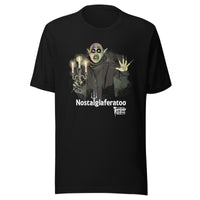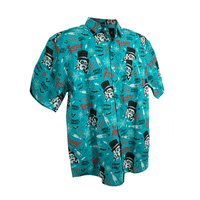9 inventions from the 1960s that are still the same today
It's hard to improve on Bubble Wrap and Slurpees!

The 1960s gave us many things that haven’t stood the test of time. Vegetable-flavored Jell-O, anyone? But some things conceived during that era are not only still around but have remained largely the same as when they were first introduced.
Here are nine things from the 1960s that are still (mostly) the same today.
1. Liquid Paper

In the 1950s, an executive secretary named Bette Nesmith (later changed to Bette Nesmith Graham) was fed up with her inability to correct any mistakes she made when typing something up. She was an artist and knew that when she needed to fix something in a painting she would just paint over it instead of trying to erase it. She took that same principle and applied it to her typing. Thus “Mistake Out” was born. Bette began manufacturing her new invention in her own house with the help of her young son, Michael (yes – Michael Nesmith of The Monkees). While technically invented in the 1950s, the company did not officially adopt the name Liquid Paper or become widely known until the sixties. The product is still around today in the same form except for one important change — the toxic ingredient trichloroethane was removed in 1989.
2. Bubble Wrap

Alfred Fielding and business partner Marc Chavannes invented Bubble Wrap while trying to create textured wallpaper they thought would be cool and modern. At first, they were discouraged by the amount of air bubbles trapped in the sealed plastic. They tried many different uses for it, like greenhouse insulation, but nothing worked. In 1960, they founded the Sealed Air Corporation and a year later they struck gold. IBM had just released the 1401 computer (the “Model T” of computing) and needed a safe way to ship it. The Sealed Air Corp. knew they had the perfect thing! Bubble Wrap became a necessity in shipping fragile items and now in the age of online shopping has become more relevant than ever.
3. 9-1-1

In 1968, the American Telephone and Telegraph Company (AT&T) proposed using 9-1-1 as a national emergency services number. They chose those numbers in particular because they were simple, easy to remember and had not been used as an area code for any region in the United States. On February 16, 1968, Speaker of the Alabama House Rankin Fite made the first ever 911 call in Haleyville, Alabama. This emergency 911 system in Haleyville is still in operation to this day.
4. Aspartame

In 1965, G.D. Searle & Company chemist James M. Schlatter created aspartame while synthesizing ingredients for a planned anti-ulcer drug. While working with this new substance he accidentally got some on his fingers. He licked his finger to pick up a piece of paper and was surprised at the sweet taste. Schlatter knew he had something good on his hands (literally) and decided to develop it further. While discovered in the Sixties, aspartame wasn’t approved by the FDA until 1981, gaining commercial names like NutraSweet and Equal.
5. ZIP codes

During the second world war, the U.S. Postal Service lost a significant number of employees to the war effort. In order to streamline the process while short-staffed, a Zoning Improvement Plan (ZIP) was introduced using two numbers to indicate the city and state of a given piece of mail. By 1963, the amount of mail being delivered had increased dramatically and the U.S.P.S. needed a better way to help categorize and efficiently deliver it. They created the five-digit ZIP codes we know today.
6. Kevlar

Poly-paraphenylene terephthalamide (branded as Kevlar) was invented by Dupont chemist Stephanie Kwolek. In 1964, the company was trying to find a way to make lightweight, strong tires in anticipation of a gasoline shortage. Kwolek’s mixture was cloudy and thick, not what they were striving for. However, instead of throwing it away, she decided to test the dried material and found it was extremely strong and durable. Countless lives have been saved by the implementation of Kevlar vests and it is still made by the same process invented by Kwolek in the 1960s.
7. Sharpie

While felt tipped markers had been around for years by the mid-1960s, they were large, clunky and hard to write with. Chemists at the Sanford Ink Company knew there was a better way. In 1964 they introduced the very first pen-style permanent marker they dubbed the Sharpie. It had a plastic foam tip (as opposed to the wool felt in other markers at the time) and could write on virtually any surface. The Sharpie was a hit and even got endorsements from TV hosts Johnny Carson and Jack Parr. At the time it was only offered in black but now comes in many different colors. Apart from other small improvements over the years, not much else has changed about the most famous marker in America.
8. Lava lamp

British accountant Edward Craven Walker invented the “Astro Lamp,” as he called it, in 1963. The trippy effect of the lamp is created when heat from the light melts wax that floats up and down in a water-based liquid. While the exact formula is a company secret, an important ingredient is carbon tetrachloride which keeps the buoyant wax heavy enough sink through the water. Lava lamps have remained virtually unchanged and mesmerized children and adults alike for over fifty years.
9. Icee and Slurpee

Kansas Dairy Queen franchise owner Omar Knedlik discovered frozen soda was a hit with customers after leaving bottles in the freezer just to keep them cold. He built a prototype machine with an old car air-conditioner and developed the Icee name and logo with artist and friend Ruth E. Taylor. While first discovered in 1958, the patent for the official Icee machine wasn’t granted until 1960. In 1965, 7-Eleven made a deal to sell the drink in its stores under the condition that it change the name to Slurpee. Whatever you call it, the frozen carbonated beverage now sold in in thousands of places across the country has remained virtually the same since its inception decades ago.







17 Comments

In 1984, NutraSweet sent gumballs to five million homes in a massive
direct mailing campaign. Every one got 5 free gumballs! Kool-Aid with
NutraSweet wasn't far behind.











































-2.jpg)
